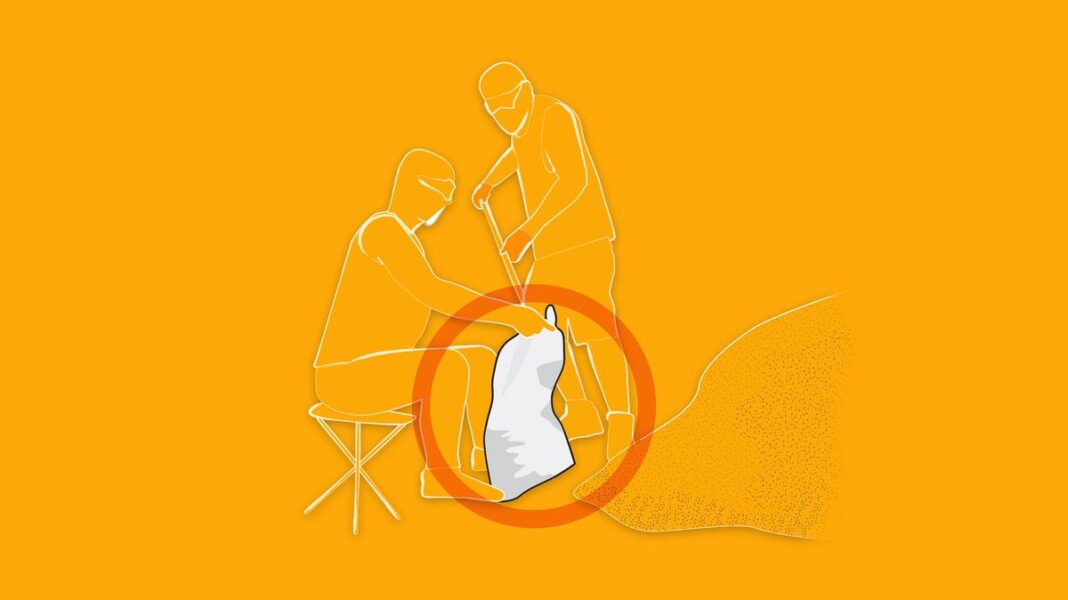Florida residents prepare sandbags as Hurricane Milton approaches. Here’s how they work.
With Hurricane Milton nearing the Florida coast, residents are again getting ready by filling and placing sandbags—an effort to reduce flood impact that has become routine since Hurricane Helene and other previous storms.
For those unfamiliar with their use, sandbags might appear to be an unusual choice for flood prevention. However, they can be extremely effective in redirecting water away from structures and critical areas when handled correctly.
“When properly filled and positioned, sandbags can serve as a barrier that redirects flowing water around buildings instead of admitting it,” states the U.S. Army Corps of Engineers in its sandbag guidelines.
While sandbags can help decrease flooding risk, they don’t provide complete protection. “Using sandbags does not ensure a fully watertight barrier, but they work well in most situations,” the Corps of Engineers explains.
What materials are used for sandbags?
Sandbags are typically constructed from one of the following materials, according to the Lewis County Emergency Management agency in Washington.
- Burlap: This is the most common material. Untreated burlap sacks are readily available at hardware and feed stores and are durable against harsh weather conditions.
- Woven polypropylene: This type of plastic is more durable than burlap.
What size should sandbags be?
Sandbags should be 14 to 18 inches wide and 30 to 36 inches deep, suggests the Lewis County agency. It is important not to use trash bags or feed sacks as substitutes unless absolutely necessary.
How to fill a sandbag?
Clean sand is the best option for filling sandbags. If unavailable, heavy clean soil or pea gravel can be used. Filling sandbags is most efficient with two people, who should wear safety goggles and gloves.
- One person should hold the bag open on the ground.
- The other fills it using shovels of sand.
“Bags should be filled to about one-third to one-half of their capacity,” advise the city engineers from Madison, Wisconsin. “This prevents the bags from being too heavy and allows for a proper seal when stacked.”
When filled correctly, each sandbag should weigh between 35 to 40 pounds. Avoid filling sandbags with items like rocks or sticks that can puncture them.
For larger projects, specialized equipment such as bag-holding racks and metal funnels can greatly speed up the filling process, according to the Madison site.
If bags are being filled on site, keep them open and fold the top under when placing them. Press down on each layer after stacking before adding another.
For transporting filled bags, use less sand and tie the tops shut to prevent any spills.
How to stack sandbags?
To stack sandbags, first prepare the area by removing debris and other items from the ground where you’ll place them. Since you’ll be making a wall to block water, ensure a tight seal with the ground.
Arrange sandbags lengthwise in a staggered formation, similar to bricklaying. They should be oriented parallel to the water flow direction to create a more effective barrier.
Make sure sandbag barriers are at least a foot higher than the expected flood peak, advises the North Dakota State University Extension.
A freestanding barrier should not be more than a few feet tall to maintain stability. For higher walls, the Corps of Engineers suggests constructing a dike that is three times wider than its height. Adding plastic sheets during construction can also aid in keeping water out.
Using sandbags to protect doors and windows
Sandbags can also be utilized to prevent water from entering through doors and windows.
Insert a plastic sheet, 2-3 millimeters thick, between the building and the sandbags, securing it with duct tape. Stack bags tightly against doors and windows, ensuring they are positioned as high as necessary.

